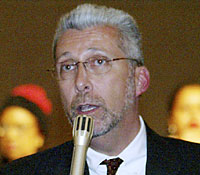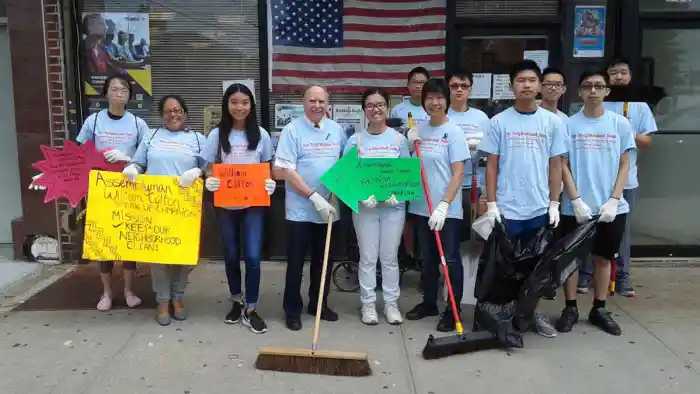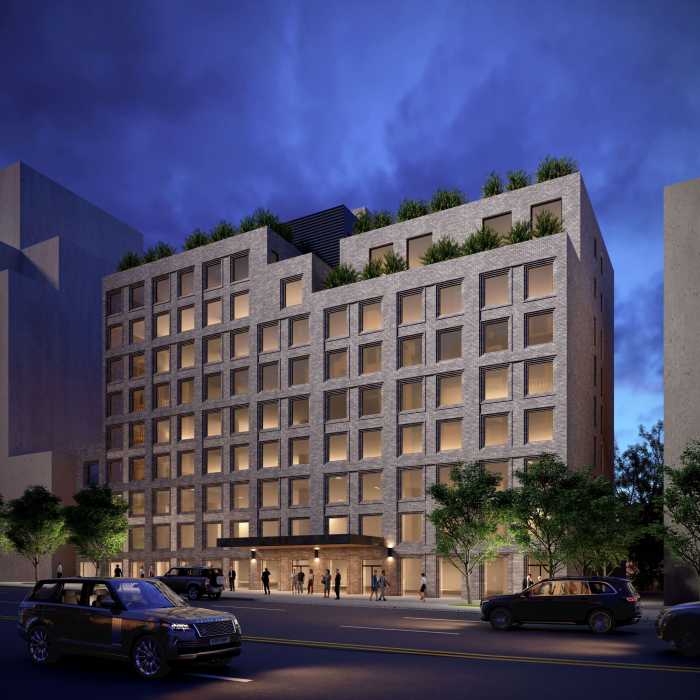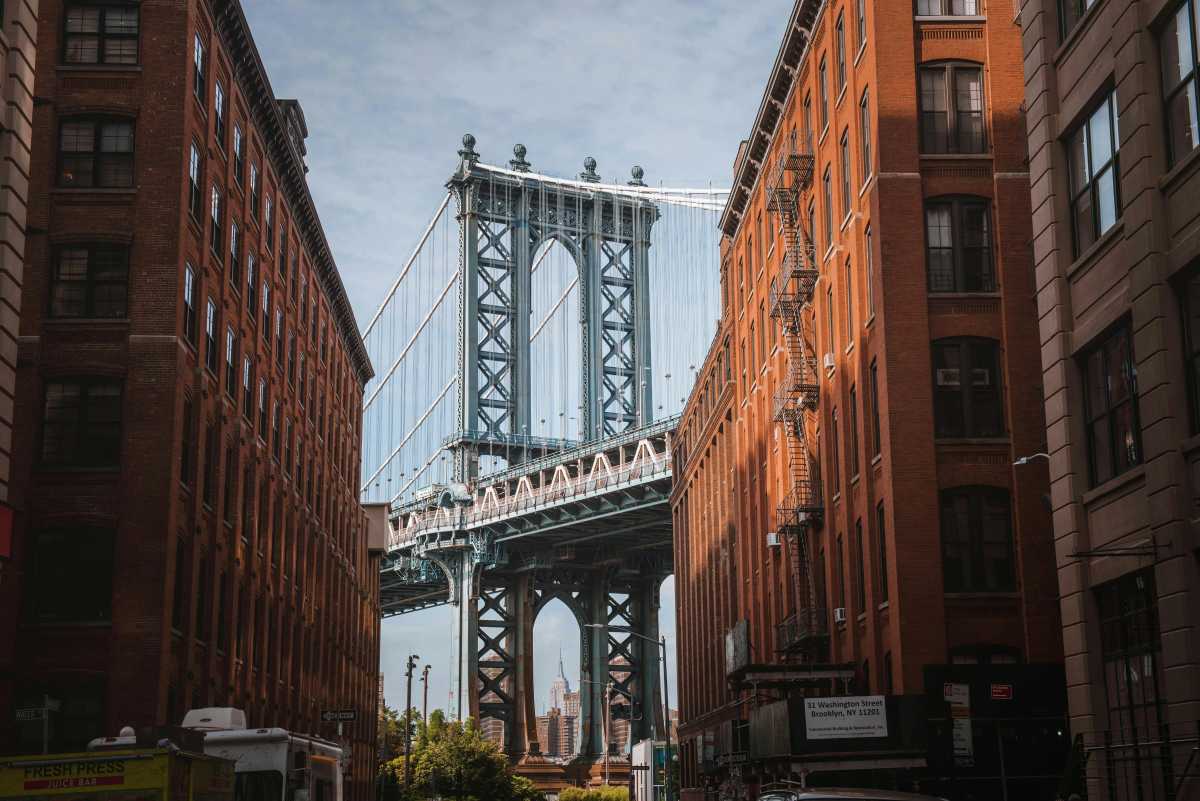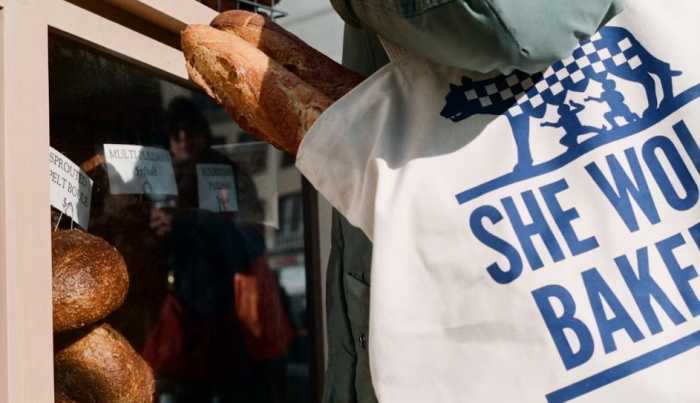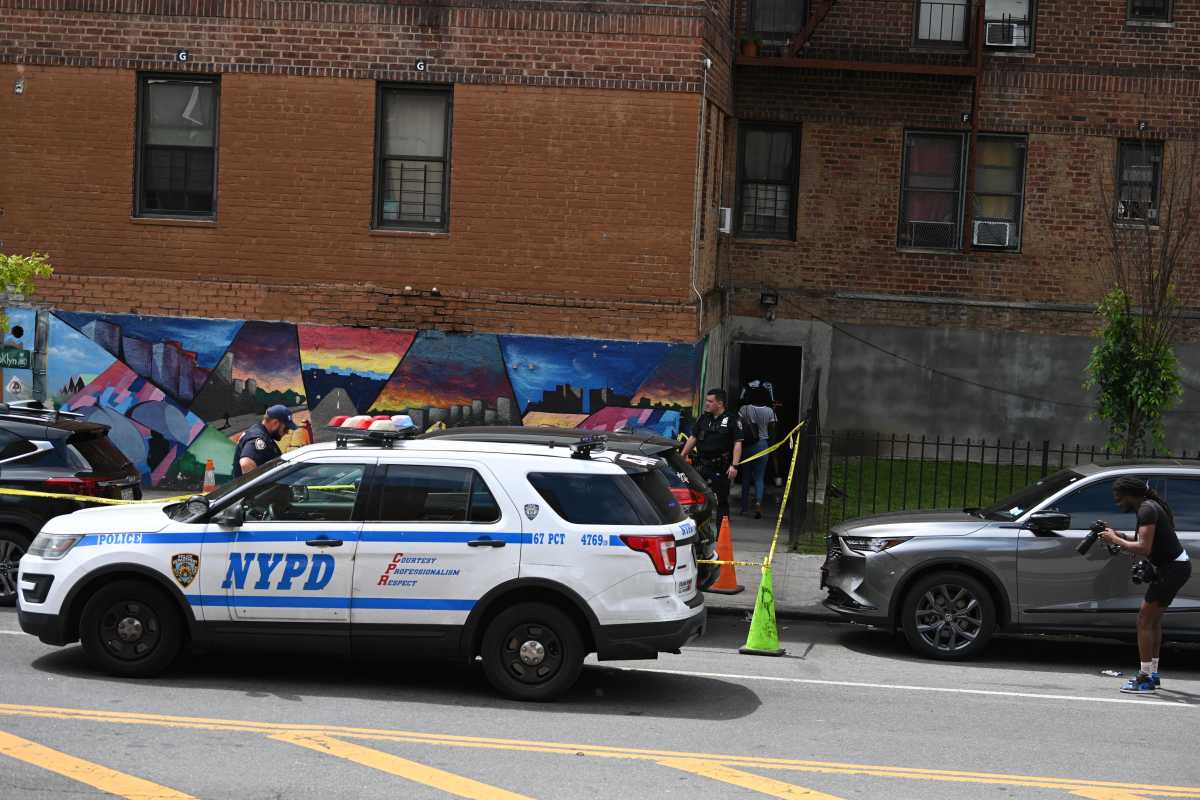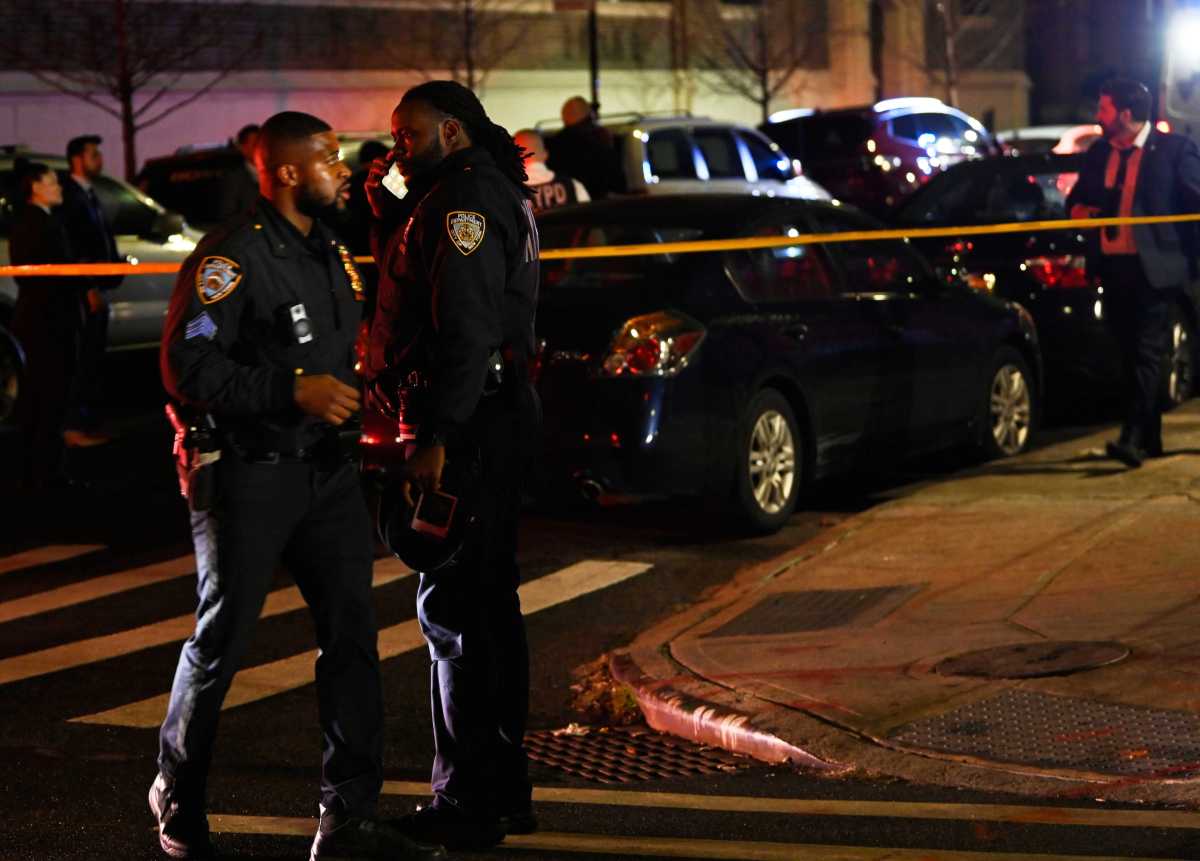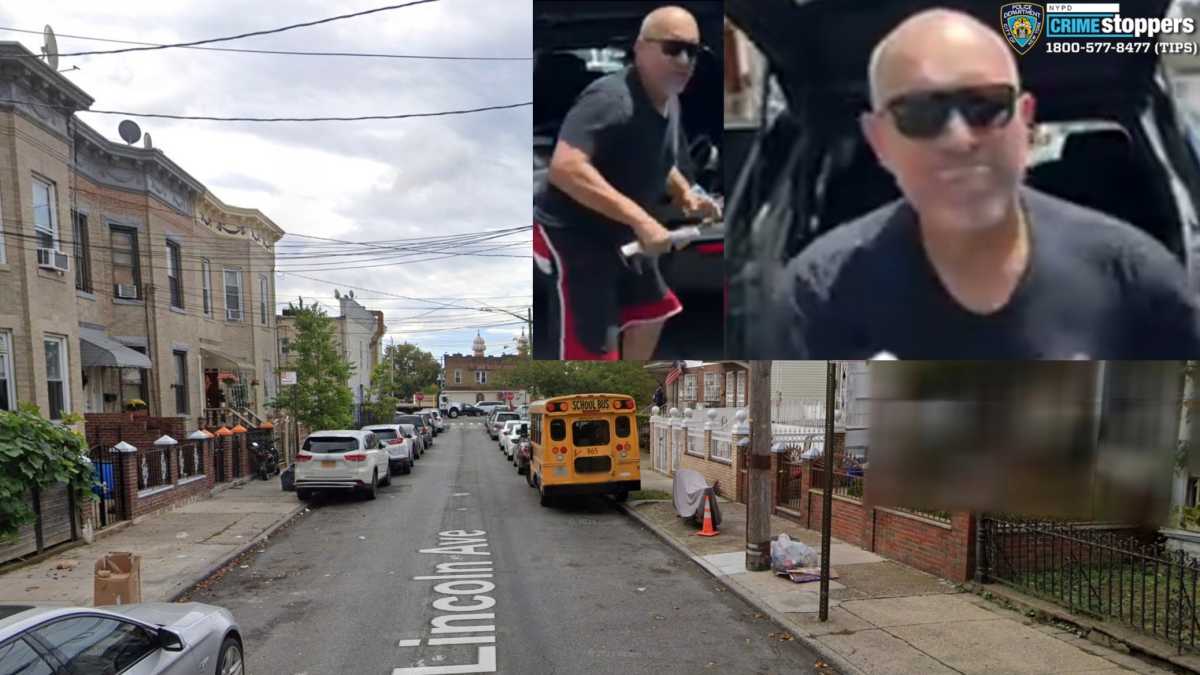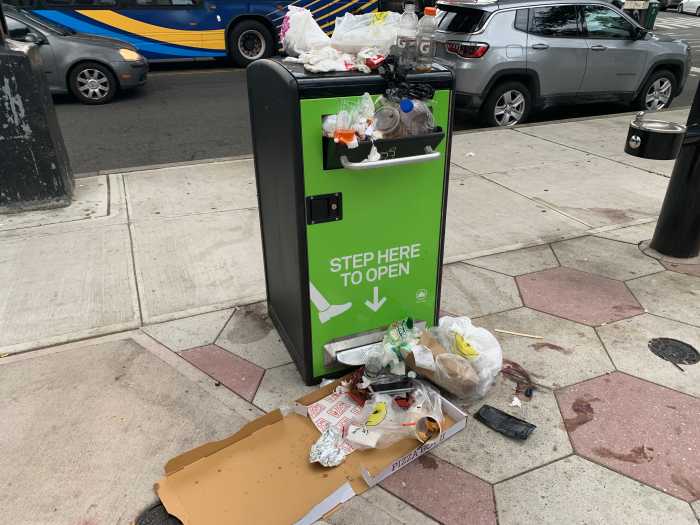As if opponents of Forest City Ratner’s “Atlantic Yards”
plan didn’t already have enough reasons to dislike him, a top official
of the development company has taken to labeling as “blighted”
the six square blocks of Prospect Heights that the project would subsume.
At the second public meeting in two weeks, Forest City Ratner Executive
Vice President James Stuckey said he expected the state to determine land
in the footprint of the Atlantic Yards site to be “blighted,”
a move that would allow his company to forcibly purchase the property
from individual owners for a price determined by the state.
And with each mention of the word, Stuckey was greeted by a chorus of
jeers.
The development company’s principal owner, Bruce Ratner, proposes
to build a $2.5 billion complex on property bounded by Flatbush, Atlantic
and Vanderbilt avenues and Dean Street — including Pacific Street
— that would include a basketball arena for his New Jersey Nets and
17 buildings including four office skyscrapers and 13 apartment and commercial
buildings.
Up to 11 acres of private property in that area could be condemned.
At the Nov. 29 informational meeting, jointly hosted by the three community
boards whose districts include portions of the Atlantic Yards site —
CB2, CB6 and CB8 — at New York City College of Technology downtown,
Stuckey addressed the ways in which the state’s eminent domain law
could help his company acquire private property — a mix of condominiums,
co-ops, apartment buildings, commercial property and vacant lots —
whether the owner is willing to sell or not.
Ratner has been able to make most of the condo owners offers they could
not refuse, reportedly paying well above market value for all but four
apartments in two buildings.
Under eminent domain, however, the bulk of the private property in the
site can be condemned if deemed eligible by the state to be developed
for “public use,” as spelled out in the Fifth Amendment to the
U.S. Constitution, provided owners are given “just compensation.”
The topic was referred to at the meeting in a question-and-answer period
with Stuckey during which the issue of a pending U.S. Supreme Court ruling
on eminent domain was raised.
In that case, a woman in New London, Conn., and several of her neighbors
have challenged that city’s findings that property on which their
houses stand can be taken to make way for a Pfizer office building under
the determination that economic development, or higher tax revenue, could
constitute public use. The Supreme Court is expected to hear the New London
case this spring.
Addressing the audience questions about whether or not he thought the
neighborhood was “blighted” — a term often used to justify
urban renewal in low-income areas — and if the Connecticut case would
have bearing in Brooklyn, Stuckey said the two examples of eminent domain
were unrelated.
“That case has no bearing, I believe, on what will happen here, because
the case here follows by what the Empire State Development Corporation
[the state agency that would sponsor the project and enforce condemnations],
and state and city determine based on this case, and the number of findings
of, yes, blight,” Stuckey said.
Audience members responded with a chorus of catcalls shouting, “We’re
not blighted!”
“You’re blighted!” one woman shouted at Stuckey.
New York State’s eminent domain law does not, in fact, require a
determination of blight in order to condemn land for public use, according
to a study released by the Institute for Justice, a Washington, D.C.-based
public interest law firm that is representing the New London residents.
New York is one of only seven states in the country (along with Connecticut)
that allows condemnations for private business development alone, an institute
lawyer said.
The probing by some community members at Monday night’s meeting came
on the heels of information released this week by Forest City Ratner that,
after months of negotiations to buy up private land in the footprint of
the proposed arena site, the company had purchased 48 of the 52 condo
units in two of the larger lofts buildings.
There are 69 co-op and condo units in the Atlantic Yards footprint, said
a Forest City Ratner spokeswoman.
Meanwhile, other questioners raised two issues, based on an exclusive
report in last week’s Brooklyn Papers — that a substantial amount
of property was still held by commercial landowners, some of whom have
vowed not to sell to Ratner, and that developer Shaya Boymelgreen has
a deal with one of those property owners to develop his own residential-commercial
buildings within the Atlantic Yards site.
After the meeting, Stuckey seemed less than pleased by the line of questioning
about the commercial property and Boymelgreen.
Stuckey told The Brooklyn Papers: “As you reported on June 16 —
I have the paper in my office — we said we were going to do everything
we could to limit the amount of residential condemnation, whether it be
condos or rentals, and we’ve done it. And now that we’ve done
it, all of a sudden the story changes.
“People who are against the project are now saying, ‘Well, we
want to talk about commercial. We want to talk about a handful of lot
owners that have owned vacant buildings, that have all of a sudden gotten
religion, and now they want to build residential,” Stuckey told The
Papers.
Declaring blight, however, could insure that, regardless of the outcome
of the New London case, Atlantic Yards condemnations could proceed.
While some define “public use” as projects like highways, parks
and public schools, Columbia University Law professor Thomas W. Merrill
said the basketball arena could also qualify.
“The stadium will be open to the public, that’s a legitimate
purpose for eminent domain,” he said.
Institute of Justice lawyer Bert Gall, who is part of the Connecticut
residents’ legal team, said the challenge lies in what is meant by
the term “public use.”
“Public use has been used for over 150 years in this country and
the courts, and most people today, when they talk about eminent domain
it means a bridge or a road or a courthouse — it’s something
the public can own and use,” said Gall. “It doesn’t mean
a condo and It doesn’t mean a stadium, or something where a private
owner has it and uses it for his benefit.”
Gall said the proposed Atlantic Yards condemnations appeared to be as
much for economic development purposes as those in the New London case.
“It’s just the same, but it’s dressed up as blight,”
he said. “Most cases of blight we see are pretty flimsy.”


